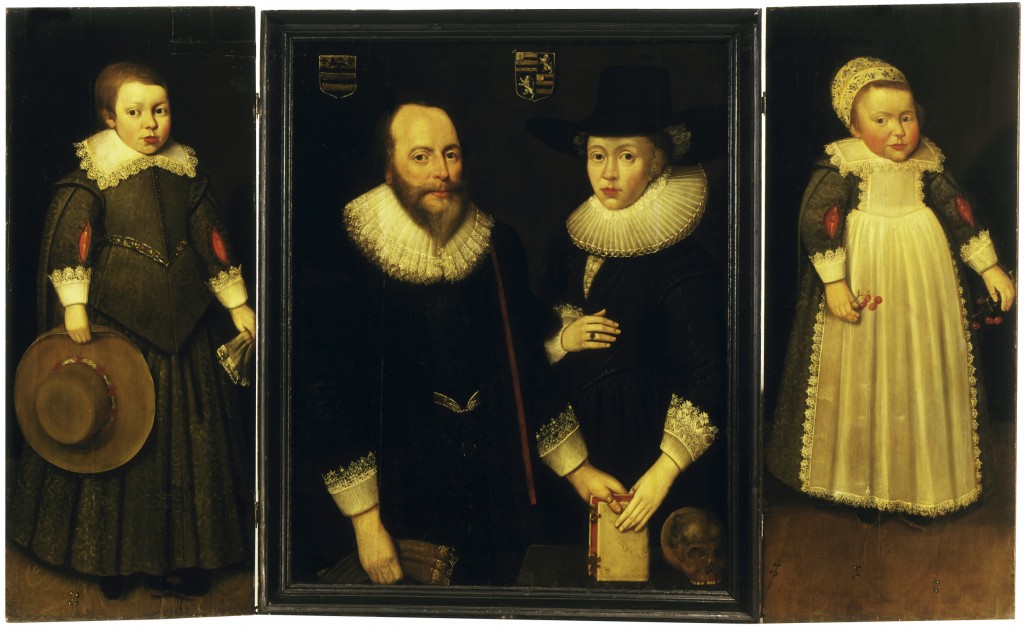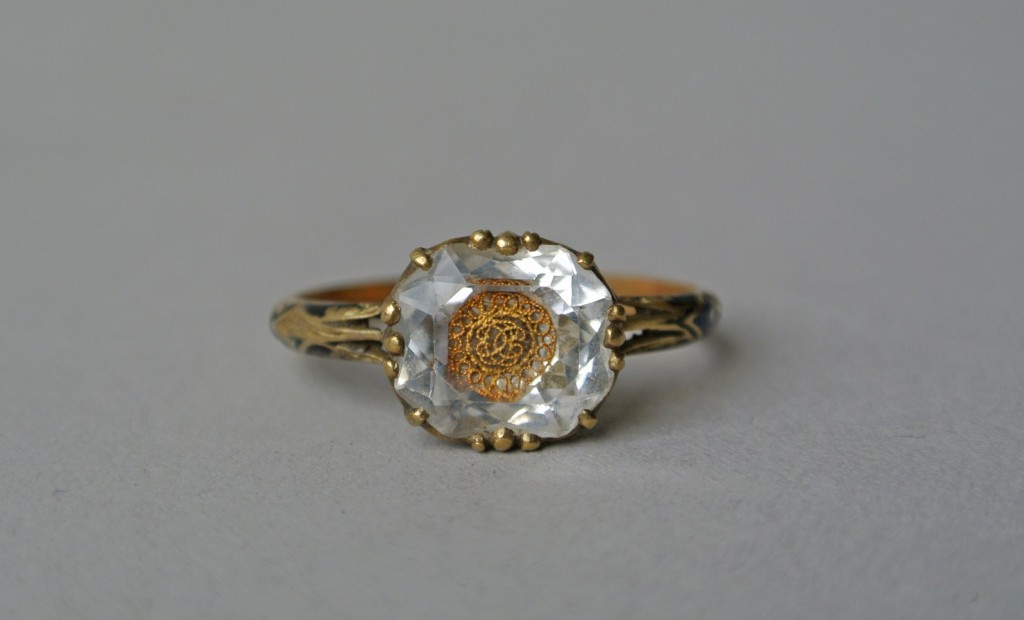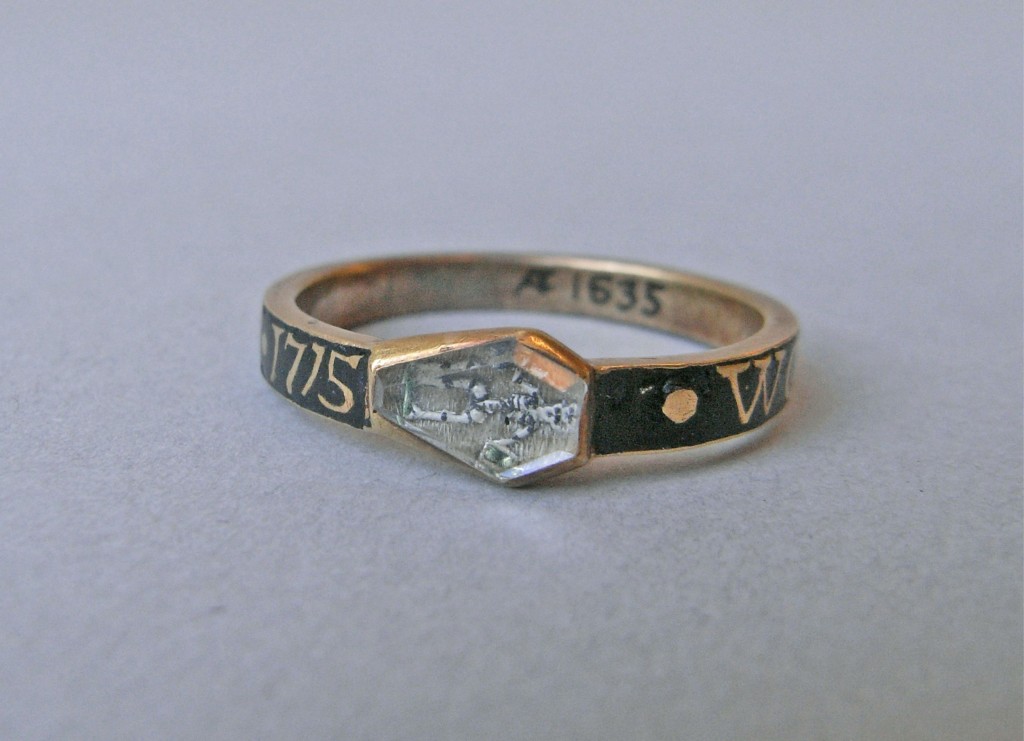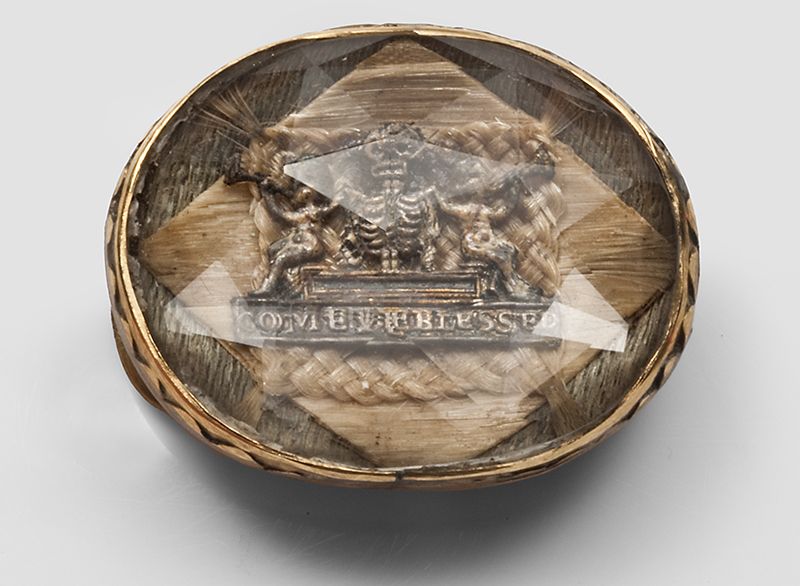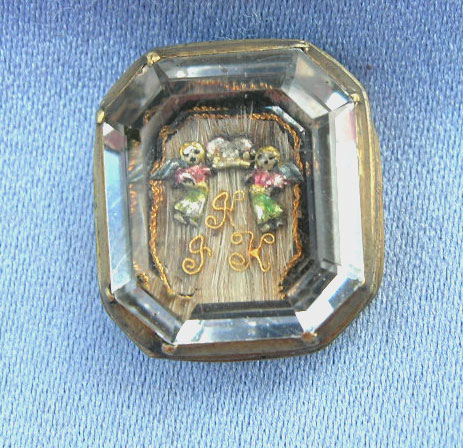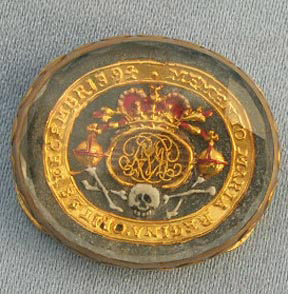The Importance of Memento Mori & Jewellery
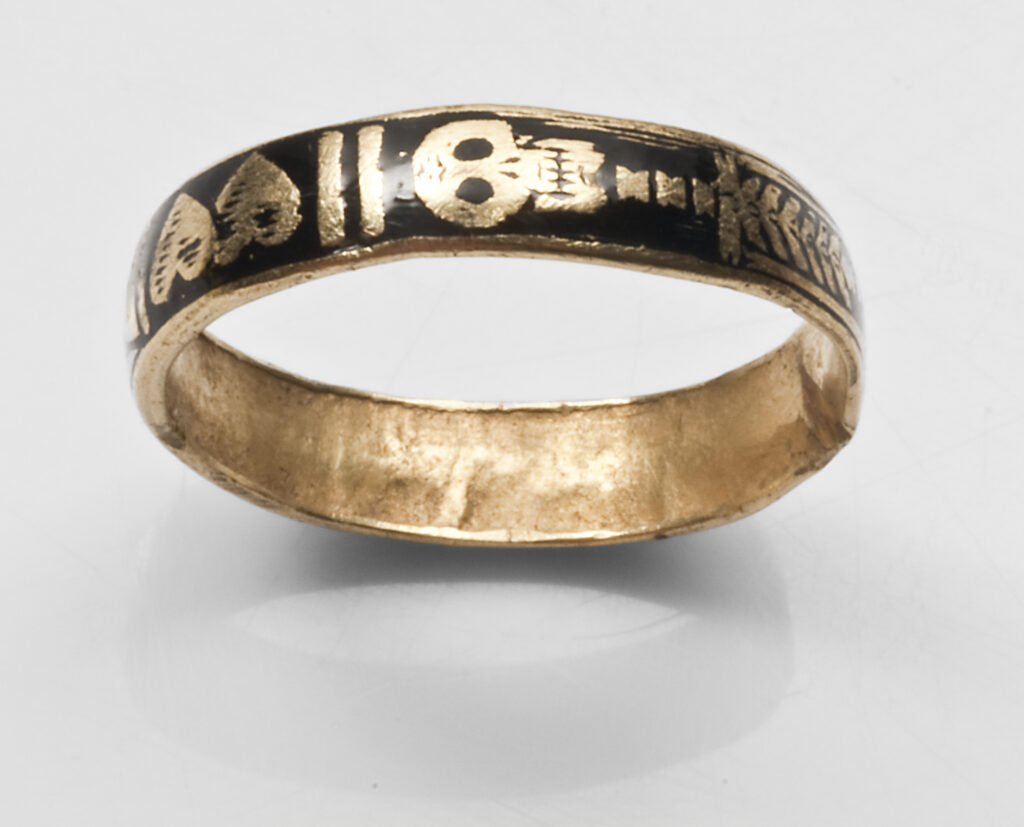
Memento mori, or ‘remember you will die’ is an important personal value to identity in the 16th, 17th and 18th centuries. As the mourning industry grew into a sustainable industry in its own right, the message only grew as it was imprinted upon fashionable accessories and artefacts that people wore. The skull and the crossbones motif is important for both life and death, bringing back a value of the desecration of the body, which the wearer could identify with. You will die, this represents, so live life to its fullest and maximise your time, as this is what you will become.

The human remains a symbols of life and death are important during this period, as there was access to new wealth, stemming from trade routes, advancing technologies and a middle class that could afford to pay artisans for fashionable items. Educational institutions pushed for a humanist view on life, focusing away from secular views on life and this helped memento mori become something which could personally be appropriated as a symbol of personal living.

Within fashion and jewellery the jewels prior for the 16th century reflected Catholic values in love and death. With a clear understanding of mortality, final judgement meant that a life lived in piety was rewarded with an entry to heaven. This creates the constructs of the family system, relationship values and what it was to pass into death. King Henry VIII’s change to the English Constitution under the theory of the divine right of kings, gave the sovereign command over the Church of England. This English Reformation expanded his power and enacted charges of heresy and treason against those who did not follow. The bills of attainder allowed for judgement without trial, leading to executions and banishments of dissenters.

An impact so large as an ecclesiastical change has to confuse and divide a society. The change and creation of mourning rings, as well as their dedication of people in wills following the allocation of money, shows three things. One is that society could afford jewellery to be ordered outside of the aristocracy, the second is that there were artists who were relocating to or training in England in order to produce such jewels and the third is that the proximity of death was getting closer to the individual. This means that wearing the pomp of death previously was held to the higher classes, which flaunted the notions of death and judgement as being intellectual pursuits, while in the 16th century, the change to having a physical item of death was important for an individual to hold a memory, beyond reflecting of their soul in heaven.
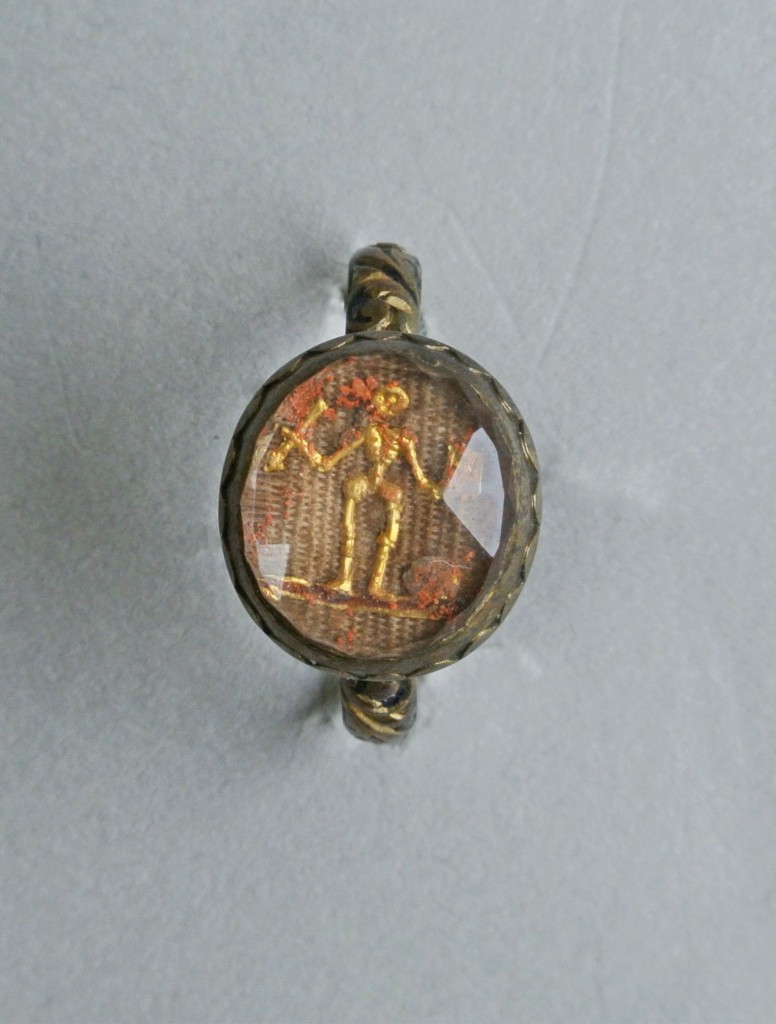
Mourning bequeathments had been in popular thought since the late 16th century, but became indoctrinated through the 17th century. Most famously, William Shakespeare in 1616 declared that in his will that his daughter and wife should have rings stating “Love My Memory”. He also details a donation of rings to three (such as Burbage) of his acting colleagues.
Samuel Pepys bequeathed 123 rings upon his death in 1703. These rings were graded into three classes and given out according to proximity of friendship and social status. So typical as a token of giving at a funeral, Pepys wrote in his diary:
“This day my Lady Batten and my wife were at the burial of a daughter of Sir John Cawson’s and had rings for themselves and their husbands.” – July 3, 1661
The period of the second half of the 17th century was the time of the Restoration of the British Crown and a time when industries were growing to accommodate a growing middle class through technological advancements. Through this, the custom of highly produced rings led to cheaper cost. Robert Walpole, Earl of Oxford, died in 1700 and bequeathed 72 rings at £1 each to friends and family, based on the same principles as Pepys.
![Enamelled gold ring, the bezel in the form of a skull and cross-bones in a border of rubies with an enamelled rosette behind, two marks 'CC' and 'AL[?]' in a monogram. Europe, 1550-75. Image courtesy of the V&A Museum.](https://artofmourning.com/wp-content/uploads/2015/12/2006BL1958_2500-1024x1024.jpg)
The token of a mourning jewel as a device of remembrance becomes ingrained within a realm of society that had not needed a standardisation of a token of remembrance (as defined by court), but the thought had seeded its way into society.
This portrait of Paull and Dorothy Holme with children dates from 1628 (artist unknown), depicting the symbols of birth, death and marriage. Its folding panels, with the children on each side, fold into the parents, representing the closeness of the family. A lot of modernity is placed upon the wearing of a jewel. It is easy to consider that a wedding ring has always been placed on the third finger of the left hand, or that a gentleman wears a signet ring on the right pinky finger. Other jewels that were typical in the early-modern period have become obsolete due to changing fashions. When considered at how they were worn, much can be considered as to the fashion of the time and practicality. If a jewel has survived for four hundred years, the suggestion of it being precious and not part of daily life is a valid point.
The Holme family are dressed in the style of the merchant class and not the epitome of fashion. It still resembles wealth, but practicality of the family and an intriguing insight into the new mobility in society that commerce could bring a family. Elaborate use of needle lace in the ruff and cuffs show the great expense and lend to the family’s affluence, as well as the bobbin lace of his wife, woven in an English method. The beaver hat that Dorothy wears reiterates the merchant-class level of the family, as it was a typical accessory at the time in this class.
Each of the panels reference the fragility of life, with youth flanking old age. A visual pun on the right incorporates two inscriptions, where “Christ is represented by a painted figure and the clock dial completes the inscription ‘We Must’ by representing the words ‘Die All’.” For the purpose of wearing jewellery, focus on the left hand of Paull. On his thumb, he wears a memento mori mourning ring, a fashionable statement of living because death is inevitable and judgement comes next. This is a fascinating insight into the actual wearing of the rings that are coveted today. The ceremony of wearing the ring would be in daily life how this portrait was depicted, being important for viewing, rather than any social proprietary being placed upon a specific finger.
Through education, access to wealth, an ecclesiastical split and humanism, memento mori depictions and fashion come together to present a new wealth and a new identity for families. The skull and crossbones depicted on this slide from 1700 are the culmination of these elements, given that the subject being mourned was from a high status; this is the most perfect design for its times to represent love, death and life itself.
Acanthus & Rococo

The acanthus is one of the most heavily used plants in decoration – if you’ve seen a Corinthian column, then you’ve more than likely seen the leaves as decoration. As the design complements heavier patterns in gold, which is seen in borders of many jewels bezels and hair/gem compartments of the 18th and 19th centuries, it has its ties back to classical art.
It was a staple of Greek architecture and art, adopted by the Romans, carried through Byzantine architecture and revived for the Romanesque movement. You can find acanthus leaves decorating Medieval manuscripts and wood carvings, so there were quite few periods of art since that haven’t been touched by this magical plant at one stage or another.
When it comes to funerary art, the acanthus symbolises the heavenly garden. It is one of the oldest cemetery motifs, acanthus is associated with the rock ground where most ancient Greek cemeteries were placed.
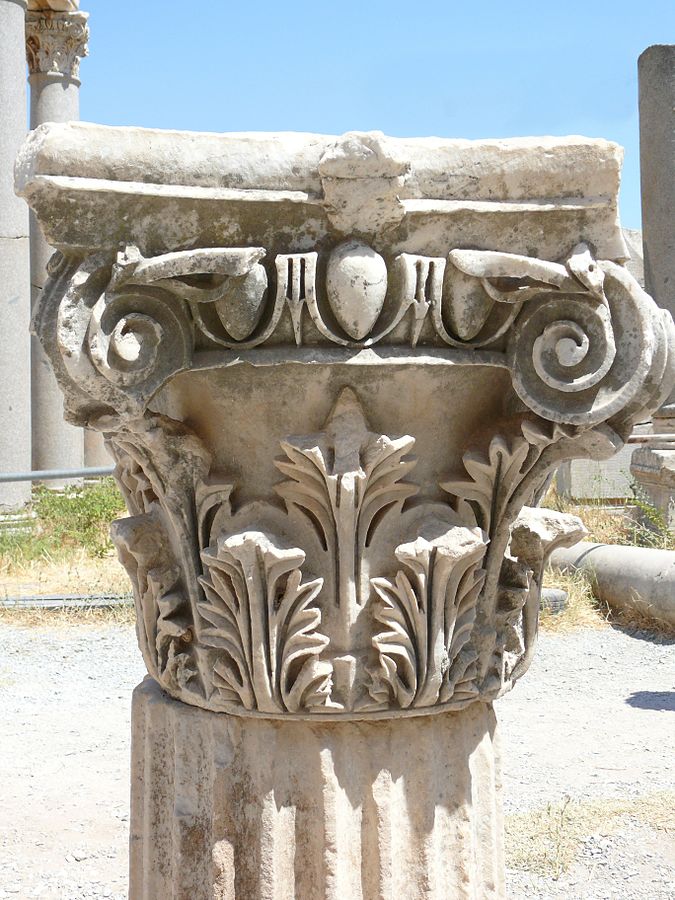
Commonly used during several Revival periods of style throughout the Early Modern period, it is a design embellishment that could be translated in gold to frame almost any style. The more stolid Gothic Revival of the early 19th century (look to around 1830-50) even had the acanthus used as a motif (though quite a lot smaller), then carried forward through the 19th century in jewellery design. It was used during the original Gothic period, as its ties back to classical art hadn’t challenged Christian identity, so for as long as there has been a mourning industry, this design has made appearances. In the Neoclassical period (c.1760-c.1820), it was used less in gold work and more in painted symbolism. For the early 19th century Regency era, it was used less so, as cleaner, straight lines ruled the day, but when there was cross-pollination with the Rococo period of the 1740s (styles were never killed off completely), then it can be found as an embellishment, particularly in architecture. By the 19th century Gothic Revival, the design was one of the more common motifs, balanced well with flowers in gold work, then carried forward with the Rococo Revival, until new and les heavier styles in the 1890s led to it being less popular in jewellery design.
Colour Theory in Memento Mori and Later Jewels
Colour theory is nothing new to modern times. Colour is the identity of emotion, be it red for passion (love or anger), black for death or blue for royalty (a more modern concept). Black and white enamel are the two predominat colours to be used in mourning jewels, but in the following 17th and 18th century examples, there are more colour sto consider.
Since the Renaissance, coloured enamel in jewellery was not uncommon, with various techniques taken from classical methods to be applied to jewellery construction. From the Cloisonné, where wire creates the definition of the enamel filling, being an antique technique, but seen in use from 12th century examples, to the champlevé, where the ridges are filled with enamel. Any technique which could be used to infuse a jewel with colour meant that its identity could be changed depending on what the colour was. For a jeweller, particularly in the 1840s onwards, having enamelled jewels with specific colours pre-designed would be easy to tailor for anyone wanting an interior inscription for sentimentality.
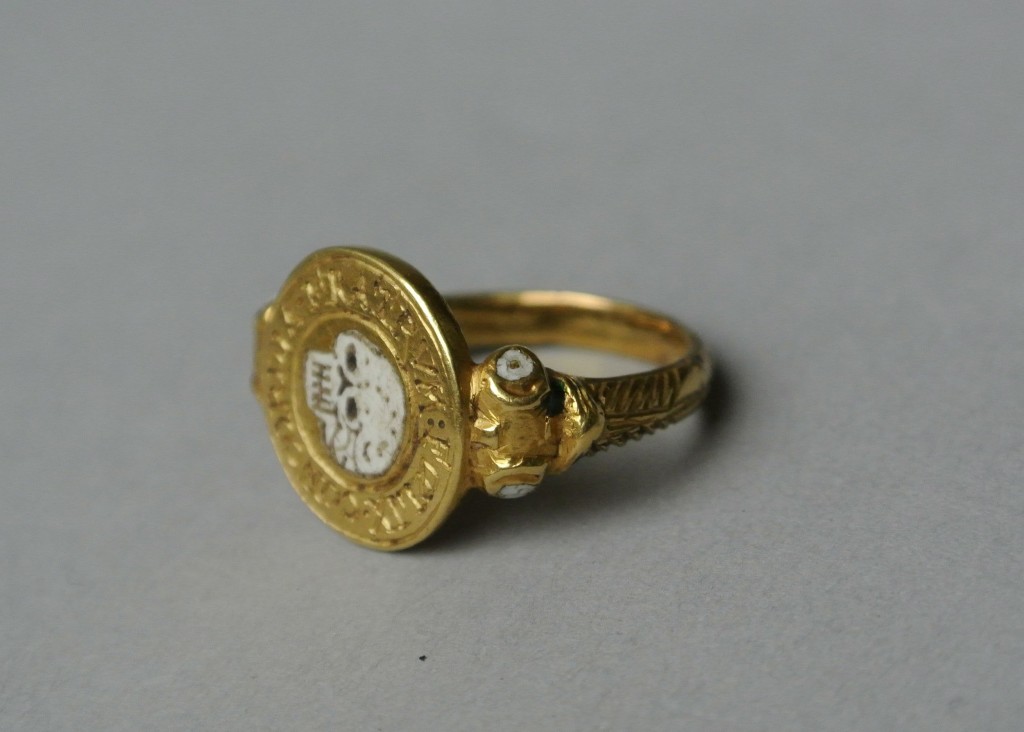
Green enamel shouldn’t be seen as a modern invention on jewels from the 19th century. In this early 17th century ring, one can see the remnants of the green enamel in the shoulders of the ring, balancing with white enamel, used effectively here for bones. The Latin inscription states ‘FOELIX CONCORDIA FRATRUM’ (a happy concord of brothers), bringing this memento mori ring into the realm of fraternal love in its construction, rather than being of direct mourning connotations. Rudoe and Dalton also have assumptions about the piece:
Text from Dalton 1912, Catalogue of Finger Rings:
‘Compare nos. 812-22, which, not having names or initials, have been classified as devotional. Rings of the memento mori type were, however, used as mourning rings; jewellers probably stocked them, and names or initials were subsequently added to order… they may be regarded as potentially mourning-rings, though some might equally well be considered devotional.’ The inscription indicates that this ring commemorates the death of two brothers – perhaps twins- who died at the same time. The back of the bezel bears a letter H above I and A, the standard way of indicating two members of the same family: the initial letter of the surname above and the initial letters of the two Christian names below (J. Rudoe, 19.11.03).
If this was a ring which had been used for the dual purpose of being a memento mori ring and also for mourning (they weren’t originally mutual as a concept), then the ring may have been worn as a token of personal identity first, between brothers, then tailored for the purpose of mourning later. Regardless of this, the nature of the green enamel as being a balance of colour for the skull and the bones is simply a colour which was fashionable. The concept of rebirth and rest hadn’t been introduced until the Romantic period. It was only by the 18th century that synthetic dyes had replaced vegetable pigments and dyes in art, which led to a greater permeation of green as a visible colour in design and arts. When something is ubiquitous enough, then it can gather a meaning which a population can understand, but this ring was early enough for the colour to resonate design over symbolism.
Memento mori jewels and those of the late 17th and early 18th century benefitted from the use of material in their construction, as they could involve colours easily and adapt. In the above example, the use of green is seen to be the basis of material which the cipher and crystal sit upon. Most interesting about this ring is the use of silver over gold and the integration of the garnets into the shoulders, which all balance to make this quite an opulent ring for its time. In its use of green, there is more of a personal slant to the nature of the ring, rather than being a symbolic meaning for identity.
The above examples are nearly a century apart, finding their difference between mourning and sentimentality, with one being at its height for memento mori style (adapting to mourning through the use of the skull/crossbones motif later on) and the decorative faceted crystal, rosette reverse bezel of the early 18th century. Both use green as an identifier, yet neither place the colour above the sentiment itself. It could be argued that the latter ring has more identity, due to the material being intrinsic to the family/individual who is being remembered. This is not uncommon, be it a piece of material that was worn, kept or even from the funeral of the deceased, which has been seen in latter 18th century jewels.
More interestingly is this ring from c.1700, with the reversed enamelled bezel that had been popular since c.1680. This variation is highly decorative, whereas most others show enamel in the rosette shape inlay, this has the enamel inlay to a hammered pattern. The green still shows through at the star-shaped pattern on the reverse, balanced with blue enamel and the white dots, perhaps reminiscent of the night sky.
Green should not be seen as the primary driver for what these jewels stood for. They were created for their sentimental reasons, but either for the use of the initials or the skull (with its reverse initials) identifying what their statement meant kept the design relegated to the primary motif in the bezel. There were not completely green coloured mourning jewels for the sake of identifying death. Death was used in black and white, each being an extreme to show death as its entropy, or white for its purity, but neither being green, blue or red as a primary colour.
By 1715, the memento mori symbols had changed from what we’ve seen in the first ring to become the symbol of death, the loss of time and eventual judgement. These symbols engrained within society the nature of living a life for eventual death and what the afterlife would bring. In this 1715 example, the use of the green enamel is quite clear upon the hour glass (tempus fugit), in which time flies and this is the symbol of life. As with the previous jewels, this is a symbol that is not the primary colour (in this case, being black). Green is used here as the fire of the torch, which the skeleton is holding. Green replaces the orange/yellow/blue fire, but also lends towards the fire burning brighter as an extreme temperature as well as a decoration.
On the reverse of miniatures and on the trim or border of brooches or clasps, green enamel or green foil, was seen as a popular way of denoting status of love and sentimentality through colour. Being further removed from the jewels seen earlier, green was now becoming a colour that could be identified with rebirth, growth, renewal and rest. The Romantic period had influenced jewellery through art by stating that colour theory was important and not a periphery to the symbolism seen in art and jewellery. Previous to the above jewellery, an urn or column with burning hearts would be seen; clearly showing death or love in its statement. Now, it was the use of colour, pearls and the simplicity of the woven hair in a dedicated area.
The 1860s and the latter 19th century didn’t change the conceit of green as a symbol, but only used it sparingly where it resonated with the wearer/person whom commissioned it.
What is interesting about all of these jewels is that as they progress, there is still the balance of white enamel with the green enamel. If used for the purpose of death, white (purity/innocence) and green (rebirth) is almost a call for the unmarried, virginal youth to grow once more. Be it literal or for the sake of sentimentality, green enamel began to take its form as a colour which was acceptable during the third stage of mourning.
This resonated through to the 20th century with the Romantic Revival of the c.1900 period, where jewels used colours frequently and utilised green as a colour in enamel and foil to replicate the styles of the early 19th century. Miniatures and oval styles found their place in mainstream jewellery designs during the pre-WWI era of the 20th century, where some jewels are so perfectly replicated that they can only be judged by their weight.
Development of the colour green enhances the importance of its use within the side. Being unconventional, it speaks to the values of the wearer and the aesthetic of the turn of the 18th century.




